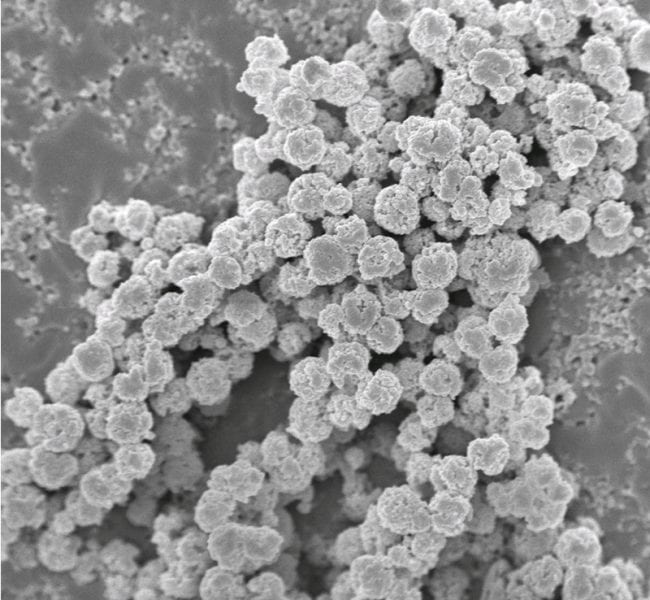
Surface morphology of the gel microparticles.
H5N1 influenza has raised concerns about the potentiality of a influenza pandemic due to its fatality rate, broad host range, and genetic mutation. As of July of 2013, a total of 633 infections in human have been confirmed by World Health Organization (WHO) and with a fatality rate of 59% since 2003. Vaccination is thus far the most effective way to prevent infection and avoid an influenza pandemic. H5N1 split vaccine is of interest for safety profiles, but its immunogenicity is relatively low. Thus, adjuvants are needed to increase the efficacy of split vaccines.
Aiming to enhance the immunogenicity of H5N1 split vaccine, a novel antigen delivery system based on quaternized chitosan hydrogel microparticles (Gel MPs) with multiple mechanisms of immunity enhancement has been developed by a Chinese Academy of Sciences research team.
Gel MPs, chitosan and glycerophosphate (GP), as the main components, are biocompatible, high water content, pH sensitive and positive charged. As a particulate antigen delivery system, Gel MPs have the ability to protect antigen against degradation, enhance antigen capture by immune cells and form an antigen depot at injection site to release antigen sustainedly. Moreover, Gel MPs with pH sensitivity and positive charged surface have high loading efficiency of H5N1 split antigen and controlled release profiles of antigen in the immune cells, which is in favor of enhancing immune responses.
Gel MPs are superior as a vaccine delivery system due to their ability to: (1) enhance cellular uptake and endosomal escape of antigens in immune cells; (2) significantly activate immune system; (3) form an antigen depot and recruit immunity cells to improve antigen capture. Further in vivo investigation demonstrated that Gel MPs are efficient antigen delivery vehicles to enhance both humoral and cellular immune responses against H5N1 split antigen. Beyond that, considering the multiple immune enhancement mechanisms of Gel MPs, it will be possible to deliver DNA vaccines and most likely, other split and/or subunit vaccines against bacterial and virus infections. Moreover, these findings should offer positive contributions to the rational design and development of efficient and safe antigen delivery systems.

















